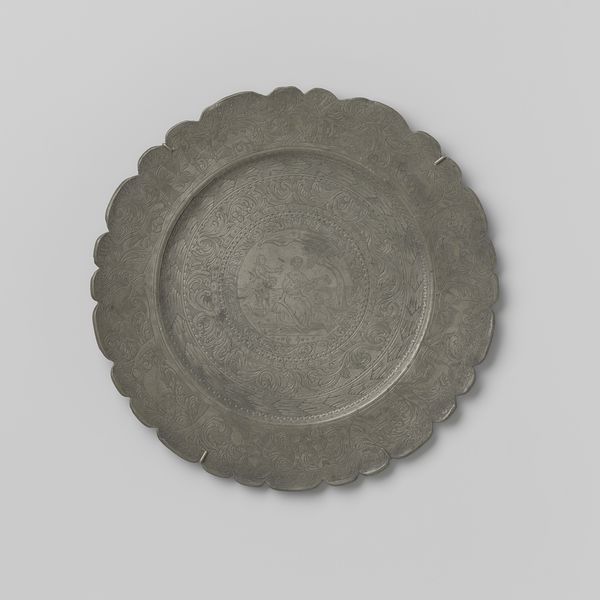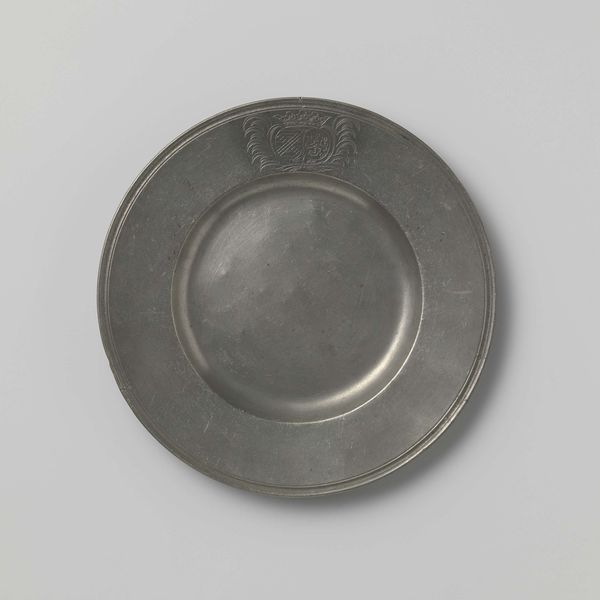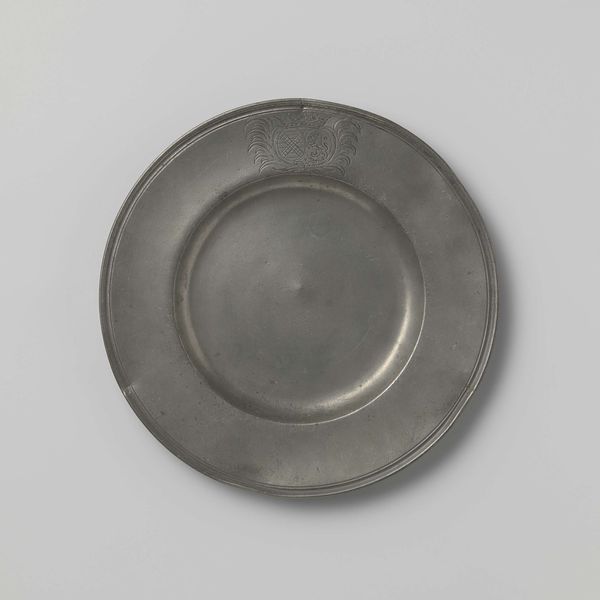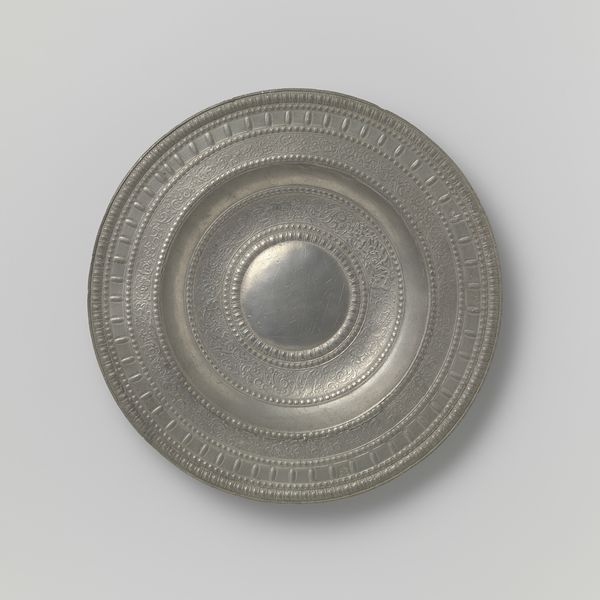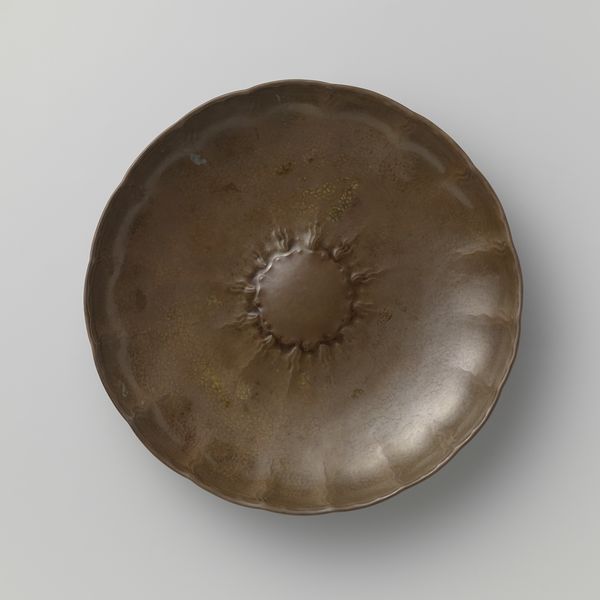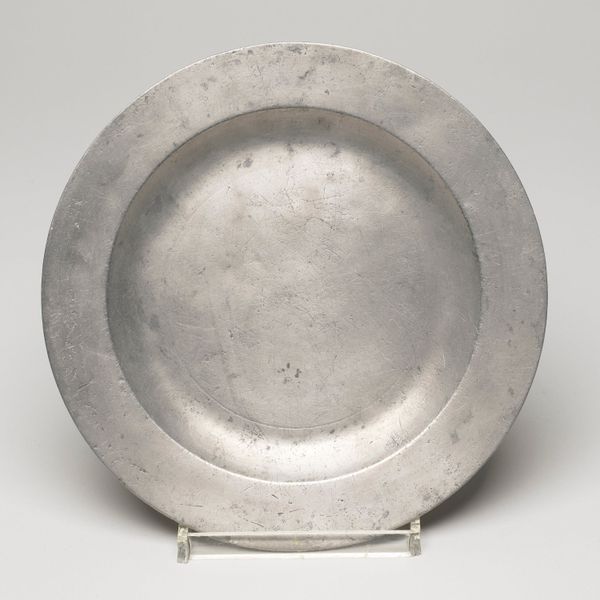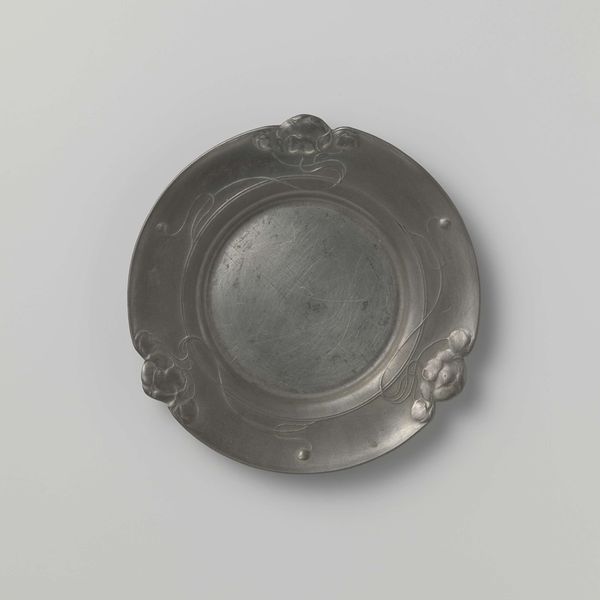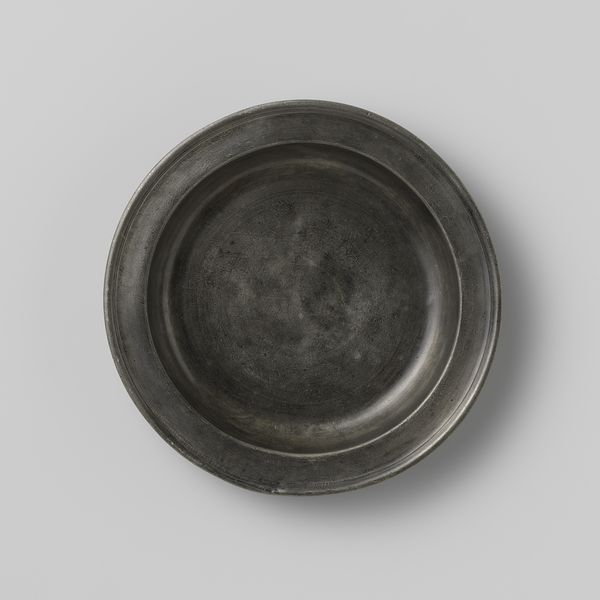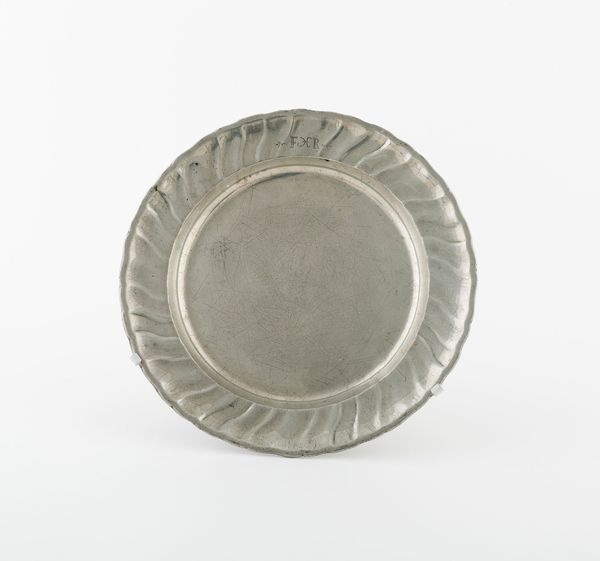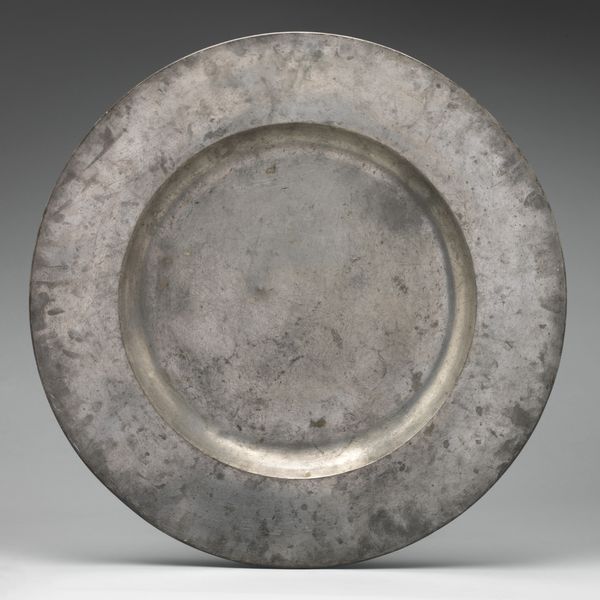
Sierschotel van tin met voorstelling van de Verrijzenis en de Twaalf Apostelen before 1598
0:00
0:00
metal, relief, sculpture
#
metal
#
relief
#
figuration
#
11_renaissance
#
sculpture
#
ceramic
#
history-painting
Dimensions: height 3 cm, diameter 35.5 cm
Copyright: Rijks Museum: Open Domain
Curator: This ornate piece, crafted before 1598, is a tin “Sierschotel van tin met voorstelling van de Verrijzenis en de Twaalf Apostelen” by Albrecht Preissensin. The shallow dish features the Resurrection scene surrounded by the twelve apostles, all rendered in intricate relief. Editor: The metallic sheen and circular design create a somber, almost haunting feel. It seems intended less as a functional object and more as a potent, symbolic representation. Curator: Indeed. Tinware like this occupied an interesting space in the late Renaissance. These weren’t mass-produced but demonstrated significant skill, often finding their place within relatively affluent households where they communicated a sense of refined piety. The choice of imagery reflects deep-seated religious beliefs and cultural values. Editor: What I find fascinating is the blending of the sacred and the domestic. A plate, a daily use item, transformed into a canvas for religious instruction and perhaps even political commentary. Does the choice of depicting all twelve apostles hold any specific socio-political weight? Are there subtle cues suggesting allegiance in a fractured religious landscape? Curator: It’s highly possible. Given the period, religious tensions were palpable. Representing the twelve apostles would signify adherence to established Christian doctrine, asserting communal religious identity within a rapidly changing theological climate. Visually affirming tradition during societal upheaval, you know. Editor: Exactly. I also see how this seemingly simple object intersects with broader questions of power, belief, and social cohesion during that era. It speaks volumes about how art was integrated into everyday life, shaping perceptions and reinforcing specific worldviews. How accessible would imagery like this have been? I wonder what meanings lay people extracted, as opposed to theologians? Curator: It’s unlikely everyone interpreted the subtleties. Much like contemporary iconography, varying cultural knowledge meant interpreting these artworks across a spectrum. Some may have understood the specific theological implications, while others focused simply on the symbolic representation of divine triumph and reassurance in the face of hardship. Editor: A potent blend of belief and artistry – all etched onto a simple tin plate. Who knew an object so modest could offer so much insight into such tumultuous times. Curator: Absolutely. The plate stands as a compelling testament to art’s ability to function as both an object of devotion and a visual record of cultural memory.
Comments
No comments
Be the first to comment and join the conversation on the ultimate creative platform.
